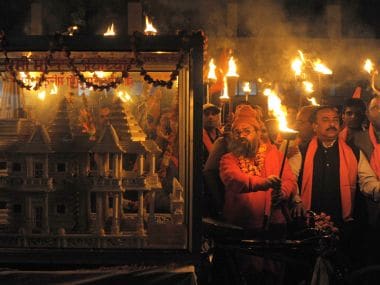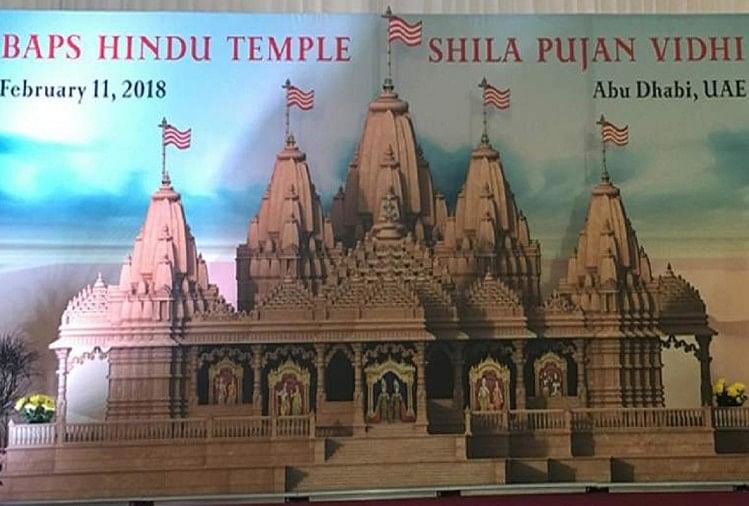
Over
the past six months, hundreds—perhaps thousands—of women have lined up to honor
a Hindu deity at a temple in southern India. Only two of them have made it in.
The rest, pilgrims to one of the country’s most unusual religious sites, have
been blockaded, shouted at, pelted with stones, and beaten back by angry
protesters. Of the two women who succeeded in viewing the deity, one was thrown
out of her marital home and separated from her children, and both have received
death threats.
The
Hindu temple at Sabarimala, in the state of Kerala, has been at the center of a
raging political and legal controversy for nearly three years. At the core of this
dispute is the temple’s policy banning women between the ages of ten and 50
from entering its premises—a ban that some argue is unconstitutional. In
September 2018, the Indian Supreme Court agreed: it ruled the ban to be a
violation of gender equality and ordered temple authorities to grant female
pilgrims access.
Ever
since, priests, devotees, activists, politicians, and—because this is
India—film stars have engaged in heated and sometimes violent debate over the
proper scope of religion-state relations. With general elections scheduled to
begin next week, the dispute over Sabarimala gives a classic puzzle in Indian
law a new and striking visibility in the country’s politics.
Ascetic,
Warrior, God
Sabarimala
and its presiding deity, Ayyappan, are unique even by Hinduism’s capacious
standards. Despite being located deep in a hilly wildlife preserve and usually
open for only a few days each month, the temple is one of India’s wealthiest
religious institutions, largely owing to the valuable offerings brought by
devotees. Meanwhile, narratives of Ayyappan usually describe him as a god
raised as a human prince who becomes a warrior and finally an ascetic. More
striking still, he is the offspring of two male gods, Vishnu and Shiva,
conceived when one of them assumed female form.


Above
all else, Sabarimala stands out for its unique entry rules: men of all castes
and even all religions are free to enter, but women between the ages of ten and
50 (regardless of caste or faith) are not. Explanations for the ban abound. As
a celibate ascetic, Ayyappan should be spared the tempting presence of fertile
women—that is, women between menarche and menopause. The forest trek, which
must be done on foot over several days, is too arduous for women. The
pilgrimage to Sabarimala is a celebration of masculinity and male bonding.
Whatever the rationale, some form of the ban—as well as criticism of it—seems
to have always existed. The last time the ban was litigated was in the early
1990s, when the Kerala High Court declared the temple’s exclusionary policy to
be constitutional.
Supporters
of the ban argue that it is a necessary aspect of worship at Sabarimala. Not
unlike the many iconographies of Mary (from Our Lady of Fatima to Our Lady of
Guadalupe and Our Lady of Lourdes), Hindu deities take on different
appearances, histories, and preferences in different places. Supporters of
Sabarimala’s ban argue that no other Ayyappan temple restricts women’s access
because nowhere else does Ayyappan appear in his celibate ascetic form. Women
who flout the rules and enter regardless, the argument goes, make it impossible
for devotees to worship Ayyappan-at-Sabarimala in keeping with their beliefs.
Opponents
of the ban counter that not everyone believes that Ayyappan-at-Sabarimala
objects to the presence of fertile women. As a result, they argue, it is women
in the prohibited age range who want to visit Sabarimala whose religious
freedom is diminished. Moreover, because Sabarimala is managed by an arm of the
Kerala state government, critics argue that the ban on women amounts to
state-sanctioned gender discrimination.
The
temple dispute first came to the Indian Supreme Court’s attention in 2006, when
a group of women lawyers asked the court to invalidate the ban. Like so many
other claims in India’s overburdened judicial system, the petition lay
virtually dormant until almost a decade later, when several social movements
began raising the issue of women’s access to religious spaces more generally.
In late 2018, after multiple hearings, the court finally issued its verdict:
the temple would have to cease enforcing the ban.
First
Principles
India’s
1950 constitution reflects conflicting impulses regarding the proper form of
religion-state relations: it both protects citizens’ religious freedom and
turns religion into an object of regulation and reform.

Many of
the constitution’s framers worried that without government action, Indian
society would continue to be troubled by practices the lawmakers considered
incompatible with democracy, such as caste discrimination and suttee (the
immolation of widows alongside their dead husbands). The constitution’s
interventionist spirit also reflects long-standing ties between sovereign
rulers and Hindu temple management, especially in southern India, where temples
have long been important centers of socioeconomic power. Since Hinduism does
not have an ecclesiastical hierarchy that can resolve disputes and oversee the
day-to-day administration of religious institutions, these functions have often
been performed by “secular” sovereigns—first native princes, then British
colonial authorities, and now the Indian state.
At the
same time, the constitution also enshrines conventionally liberal-democratic
commitments to religious freedom. It grants citizens freedom of conscience and
the right to “profess, practice and propagate” their religion. It also allows
“every religious denomination or any section thereof” to manage its own affairs
in religious matters. Both of these features suggest that religious life ought
to remain a space of private authority that is relatively free from
governmental intrusion.
Indian
courts have had to reconcile these conflicting demands. Their solution, first
articulated in a landmark 1954 case, has been the essential practices doctrine,
whose key concept is that the state cannot alter “the essential part of a
religion.” It is for the court to decide what exactly this essence is, based on
“the doctrines of that religion itself.” In the context of a dispute such as
Sabarimala, the essential practices doctrine encourages courts to consult
devotees, sacred texts, and religious authorities to judge whether the ban on
women’s entry is indeed central to Ayyappan worship. If it is, then it merits
protection, even if it clashes with other constitutional values such as
equality and nondiscrimination.
Of
course, disputes of this type rarely involve practices that everyone agrees are
“essential.” Believers are sometimes incensed when a court informs them that
their deeply held views are not religiously significant or accurate. Still,
Indian courts have frequently attempted to reform the practice of religion
(especially Hinduism), and very often they have succeeded—a testament to the
immense popular respect the country’s judiciary commands compared with the
legislative or executive branch. Soon after independence, for instance, the
Supreme Court forced various temples to grant members of the so-called
untouchable castes, or Dalits, the same entry rights as other Hindus, in
keeping with the new constitution’s abolition of untouchability. Likewise, in a
series of decisions from the 1970s and 1980s, the court ruled that hindu
priests did not have a constitutional right to pass down their positions to
their heirs.
Religion
on the ballot?
If the
last few months are any indication, the Sabarimala case may challenge this
largely impressive record on religious reform. As often happens, the Supreme
Court produced no majority opinion, but a plurality of judges held that
Ayyappan devotees were not distinct from Hindus in general and that the
exclusion of women between the ages of ten and 50 was not essential to Hinduism
writ large.
The
public’s reaction was swift. By mid-October 2018, over 2,000 people had been
arrested for protesting the ruling. Hundreds more have since been arrested for
blockading aspiring women pilgrims. A local actor and Hindu nationalist
activist announced that “women should be ripped apart;
one half should be sent to Delhi and another to the Kerala Chief Minister.” On
the other side, women who support the ruling conducted counterprotests and
formed a 620-kilometer human chain in support of gender equality. In a matter
of weeks, individuals, religious groups, and caste associations had filed more
than 40 petitions asking the court to concede that, given the protests, a grave
injustice had resulted from its opinion. The court has repeatedly postponed
hearing these petitions, leaving the issue in limbo.
In the
meantime, Sabarimala has gone from being a regionally significant temple to a
proxy for the struggle between Hindu nationalism and a more liberal, inclusive politics.
For Kerala, the dispute over Sabarimala is likely to have a negligible impact
in the short run. Since 1957 the state government’s leadership has more or less
alternated between the Communist Party of India and the Indian National
Congress, and it is unlikely to deviate from this pattern in the foreseeable
future. However, Keralite politics are increasingly being conducted in the
shadow of Indian Prime Minister Narendra Modi’s Bharatiya Janata Party (BJP),
which has been quietly making inroads into the state for years. Issues such as
Sabarimala will only exacerbate this trend.
At the
national level, Sabarimala’s ban has been consistently supported by the BJP,
which rose to power by promoting a vision of India as a culturally Hindu
nation. At many points, the BJP has advocated legal measures that would
prohibit India’s various religious communities from using their own customs to
govern marriage, divorce, adoption, and other “personal” issues. Indeed, in
late 2018, the BJP was criticizing the Supreme Court verdict on Sabarimala for
outlawing a Hindu religious custom and simultaneously celebrating its victory
in Parliament for having outlawed a Muslim practice, namely, that of
effectuating a divorce by pronouncing the word talaq three times.

Yet
Sabarimala is not a neatly partisan matter. The Indian National Congress, the
BJP’s primary adversary and traditionally the more socially progressive party
at the national level, is one of several key players to have vacillated over
the issue. The Congress’ waffling is partly due to the divergent political
incentives it faces at the regional and national levels. Nationally, the
Congress’ politicians initially supported the Supreme Court opinion. But in
Kerala, the Congress is the less progressive of the major parties and thus
better positioned to attract conservative Hindu votes. As a result, the
Congress leaders in Kerala began agitating for a reinstatement of the ban soon
after the Supreme Court verdict.
The
party’s state and national divisions operated at cross-purposes for more than
three months. The Congress’ national leader, Rahul Gandhi, eventually tempered
his support for the ruling, saying that there was “validity in the argument
that tradition needs to be protected” and that he would not “be able to give an
open and shut position” on the ban. Gandhi’s reversal, which came a few months
ahead of a general election, was likely an attempt to recapture Hindu voters
who have been shifting to the BJP for several years. A similar strategy has
already boosted the Congress at the state level, where it recently flipped
three BJP-led governments after Gandhi made a point of visiting Hindu temples
on the campaign trail, among other conspicuous overtures to Hindu voters.
It is
too early to fully grasp the affair’s ramifications at the national level.
Politically, if not legally, the dispute remains unresolved while the Supreme
Court continues to postpone hearings on the review petitions. Even if the court
adjusts its ruling, a single case is unlikely to overturn more than 70 years of
state intervention in religious practices. Nonetheless, Sabarimala has acquired
an undeniable and deeply polarizing political cachet in recent months—enough
for Kerala’s chief election officer to warn candidates in the upcoming
elections against “citing or invoking” religious propaganda on the “Sabarimala
issue.” Such admonitions, however, serve as guidelines rather than legally
enforceable rules. Most likely, the dispute’s ultimate arbiter will still be
the voting public.










